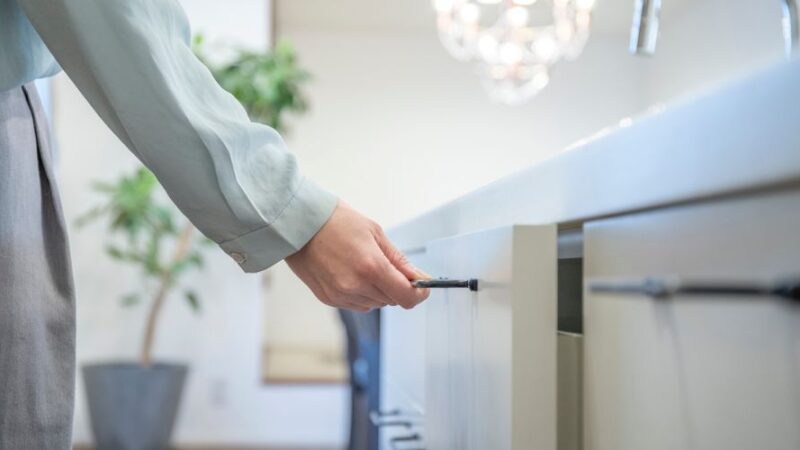9 Common Basement Waterproofing Mistakes to Avoid

An essential part of keeping a dry and safe house is waterproofing your basement. Steer clear of typical waterproofing errors whether you’re renovating your basement or just want to shield it from water damage.
We’ll highlight nine common basement waterproofing errors in this tutorial and offer advice on how to avoid them.
Ignoring Early Signs of a Water Problem
One of the most common mistakes made by homeowners when waterproofing their basements is to ignore the early warning signs that moisture is entering the space. Water stains, the formation of mold and mildew, and dampness on walls or floors can all develop into more serious issues if they are ignored.
How to Avoid
To avoid making this mistake, it is essential that you act promptly upon observing any early indicators of water ingress. It’s critical to take note of any damp spots, wall discolorations, musty odors, or mold development. These signs indicate that water is getting into your basement; if you address them right once, you can prevent more serious damage from occurring to your home’s foundation and belongings.
Preventive measures:
- Regular Exams: Regularly visually inspect your basement to check for any signs of dampness, discoloration, or mold development.
- Make Sure There’s Enough Air: Make sure there is enough airflow in the basement to prevent moisture buildup.
- Address External Factors: Keep an eye out for any external issues, such as improper drainage or uneven grading, that can be contributing to water seepage.
Disregarding the External Sealing
When waterproofing a basement, one typical error is to ignore the outside of the foundation and concentrate primarily on internal solutions, such as drainage systems and sealants. One of the most crucial defenses against water seeping into your basement is the exterior of your home. You can have persistent moisture issues if you disregard this barrier.
How to Avoid
Homeowners should take a comprehensive approach that addresses both internal and external threats in order to avoid making the error of ignoring outside waterproofing. The following are crucial things to do:
- Verify your grading to ensure that the earth does not slope in the direction of your residence.Make sure the earth does not slope toward the foundation of your home by looking over your grading. When the grading is done correctly, water is routed away from the basement walls and does not pool there.
- Gutter and downspout maintenance: Regularly clean your gutters, and relocate your downspouts farther away from the foundation. By doing this, water is kept from spilling and is directed away from vulnerable areas.
- Closing off the exterior: Fill up any cracks or holes in the outer foundation walls. This includes the areas around windows, doors, and any other potential points of entrance for water.
- Other external drainage systems, such as French drains: Consider installing outdoor drainage systems, such as French drains, to divert water away from the foundation.

Using Unresearched DIY Waterproofing Products
Homeowners frequently make the mistake of thinking that any DIY waterproofing product will be suitable for their unique basement needs. There is no one-size-fits-all method for waterproofing basements because each one is unique and could result in holes in the barrier against water intrusion.
How to Avoid
If you want to stay away from this error, it’s crucial to take the time to look into the best waterproofing solutions for your basement’s requirements. Consider completing the following steps to ensure that you make informed decisions:
- Identify the Features of Your Basement: Consider the specific weaknesses in your basement, such as the type of foundation, potential locations for water intrusion, and the severity of moisture issues.
- Evaluate the efficacy of research items by looking at the many waterproofing products available. Check reviews, speak with professionals, and make sure the products you’ve chosen have a track record of effectively treating basement-like situations.
- Analyze the Environmental Elements: Recognize the surroundings and climate of where you live. Certain waterproofing products may work better in certain climates or types of soil.
- Read and follow the manufacturer’s directions. Make sure you apply the product in accordance with the manufacturer’s instructions if you choose to DIY waterproofing. Neglecting advised procedures could make the product less effective.
Skipping Professional Inspection
Many homeowners never see a specialist because they believe their basements are free of water issues. This error could cause vulnerabilities to go undiscovered and give the impression that the basement is not waterproof.
How to Avoid
To avoid making the mistake of neglecting inspections, homeowners should place a high priority on routine expert waterproofing evaluations. The following are the steps that must be taken:
- The frequency of examinations: Invest in regular professional inspections even if there aren’t any issues with your water supply. The key to preventing potential problems is prevention.
- Early Detection: Professionals can spot subtle signs of water intrusion that average people might overlook. Timely action is made possible by early discovery, which prevents more serious damage.
- Comprehensive Assessment: A professional inspection involves a detailed assessment of your basement that considers factors such as foundation cracks, drainage, grading, and potential entry points for water.
- Particularized guidance: Experts in waterproofing can provide tailored guidance based on the particular characteristics of your basement, ensuring effective and targeted repairs.
Poorly Executed Foundation Repairs
Leaks or foundation cracks are often associated with water intrusion. While attempting to resolve these problems is a good start, making mistakes in the process is where the mistakes lie. Insufficient repairs could exacerbate the problem and lead to ongoing leaks and possibly even damage to the foundation.
How to Avoid
Homeowners should utilize professionals to avoid making the costly mistake of attempting shoddy foundation repairs. Consider the following steps to ensure accurate diagnosis and effective repairs:
- Professional Assessment: Engage a foundation repair expert to do a comprehensive examination of the fissures and seepages in your foundation. The amount and underlying cause of the injury can be ascertained by experts.
- Accurate Diagnosis: Foundation experts can determine if the cracks are structural in character or the result of water infiltration. It is impossible to apply the proper repair strategy without a precise diagnosis.
- Customized Repair Options: Based on the assessment, experts can make recommendations for repairs that are specifically tailored to address the issues that are specifically affecting your foundation.
- Excellent craftsmanship: Hiring professionals with the necessary training guarantees that repairs are completed accurately and in compliance with industry standards. To get results that last, you need to be extremely creative.

Poor Sump Pump Setup
When waterproofing a basement, one of the most common mistakes committed is installing a sump pump without carefully considering its size, placement, and ongoing maintenance. Poor installation performance might also affect a sump pump’s ability to prevent water-related issues.
How to Avoid
To avoid the costly mistake of installing an inadequate sump pump, homeowners should carefully evaluate the proper sizing, installation, and routine maintenance of their sump pump. Consider following actions to guarantee the optimal sump pump performance:
- Dimensions: Verify that the sump pump is the appropriate size for the anticipated volume of water in your basement. Factors such as the basement’s size, the water table, and potential flooding risks should be taken into account.
- Selecting a Professional to Install Your Sump Pump: Employ a professional to install your sump pump. Professionals understand how to install a pump correctly, where to put it, and how to set up a reliable drainage system.
- Battery Backup: Use a battery backup system to ensure that the sump pump continues to operate in the event of a power loss. When there are frequent power outages during storms, this additional line of defense is crucial.
- Constant Maintenance: Arrange for regular maintenance inspections to evaluate the sump pump’s performance, remove debris, and confirm the float switch is working correctly. Regular testing ensures that your sump pump is ready for anything, so you can relax.
Viewing the Basement Ventilation
Basements are frequently the ideal environment for the growth of mold and musty odors because of their high relative humidity and stagnant air. Ignoring proper ventilation exacerbates these issues and may compromise the overall effectiveness of waterproofing methods.
How to Avoid
To avoid the mistake of neglecting basement ventilation, homeowners should place a high premium on installing effective ventilation systems. Consider taking the following steps to enhance airflow and prevent the buildup of moisture:
- Ventilation Fans: Place ventilation fans throughout the basement in key places to promote air circulation. You can place these fans properly to highlight areas that are damp.
- Dehumidifiers: Use dehumidifiers to control humidity levels. Through the removal of excess moisture from the air, these devices reduce the likelihood of mold growth and musty smells.
- Windows and Vents: Verify that the windows are open, and consider adding vents to allow fresh air to enter the basement. Enough cross-ventilation is necessary for a dry, healthy environment.
- Prevent Leaks in the Basement: As soon as possible, fix any leaks or cracks in the walls or flooring of the basement. These gaps are sealed with caulk to keep excess moisture out of the space.
Disregarding gutters and downspouts
While rainwater is valuable, gutters and downspouts are crucial for preventing it from getting near the foundation of your house. Water may pool up along the basement walls if these components are neglected and issues are not fixed, which could lead to leaks and other moisture-related issues.
How to Avoid
By being proactive and performing routine maintenance, homeowners can ensure adequate water drainage and prevent the common mistake of disregarding gutters and downspouts. Consider taking the following steps to increase gutter and downspout efficiency:
- Constant Cleaning: To remove any leaves and obstructions, schedule regular gutter cleanings. Clogged gutters can cause overflow and water to collect near the foundation.
- Downspout Extensions: To redirect water away from the foundation, use downspout extensions. This prevents water from building up in the vicinity of the basement walls.
- Look for any leaks: Regularly inspect gutters and downspouts for damage and leaks. Deal with any issues right away to prevent damage to the water drainage system.
- Verify the Gutter Slope Is Proper: Make sure gutters have a slight slope leading toward downspouts to enable water to flow freely. Avoid any sagging or misalignments that can impede the water’s flow.
By avoiding these common mistakes committed when waterproofing a basement, you may increase the longevity and strength of the foundation of your house. Take precautions to keep your basement dry and secure, and when in doubt, consult an expert.
Recommended – How to Deal with Plumbing Emergencies






